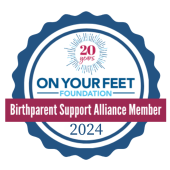
In Illinois, as well as other U.S. states, open adoption is the norm. Many families have found it a wonderful way to create strong and ongoing relationships between birth parents, adoptive parents, and, most importantly, the child.
In this guide, we’ll walk through every step to pursue open adoption in Illinois, offering insights and tips for each stage. Whether you’re hoping to adopt a child or considering placing a child for adoption, this step-by-step approach can help you understand the process and the unique elements that make open adoption such a valuable path for many.
Understanding Open Adoption and Why It Matters
In open adoption, birth parents and adoptive parents agree to maintain some level of contact, which can range from exchanging letters and pictures to in-person visits, depending on each party’s comfort level. While the plan for openness is not legally binding in Illinois, many families often formalize their plan with a written Post Adoption Contact Agreement.
Although open adoption agreements in Illinois are not legally enforceable, they are founded on trust and mutual respect, emphasizing everyone’s commitment to maintaining contact for the sake of the child.
Open adoption offers emotional and practical benefits for both birth parents and adoptive families. Studies show that children in open adoptions benefit from knowing their birth story and maintaining connections with their biological family, and adoptive parents find reassurance in the ongoing communication. Birth parents also find peace of mind, knowing they can remain part of their child’s life.
Now, let’s break down each step in the process of pursuing open adoption in Illinois.
Key Steps to Open Adoption in Illinois for Hopeful Adoptive Families
Step 1: Researching Open Adoption in Illinois
- Understand State Requirements: Illinois requires that all adoptions go through a formal process involving background checks, home studies, and legal paperwork. Familiarizing yourself with the legal process to adopt in Illinois will help you prepare for what is to come on your adoption journey.
- Explore Open Adoption Agencies: Working with a licensed adoption agency can be invaluable. Agencies, such as the Adoption Center for Family Building, specialize in open adoption in Illinois and can provide guidance at every stage. They can help with everything from completing your home study, to matching with an expectant parent, to facilitating communication between birth and adoptive families.
- Attend Informational Sessions or Workshops: Many Illinois adoption agencies offer trainings or workshops to help families understand open adoption. These sessions cover common questions, real-life experiences, and expert insights, providing a comprehensive view of what open adoption involves.
Step 2: Selecting an Adoption Agency in Illinois
Step 3: Completing the Home Study Process
The home study is an important step for hopeful adoptive families when it comes to open adoption in Illinois. It involves a detailed assessment of the adoptive family’s environment, lifestyle, and readiness. This process includes interviews, background checks, and home visits conducted by a licensed social worker, ensuring the home is safe, stable, and nurturing. Families will need to gather documents like financial and medical records and prepare a welcoming space for the child, demonstrating their commitment.
During the home study, families will meet with a social worker several times. The social worker evaluates the family’s history and readiness, but is not there to judge. Once the home study is complete and approved by the agency, the family is officially eligible to adopt.
Step 4: Matching with a Birth Family
- Getting to Know the Birth Parents: Once a match is made, the adoptive family and birth parents may have opportunities to get to know each other through meetings, phone calls, or video chats. This stage is critical for building trust and establishing a connection that can make the transition smoother for everyone involved.
- Creating an Adoption Plan: After matching, the adoptive family and birth parents work with the agency to create a formal adoption plan. This plan outlines the level of post-adoption contact, including agreed-upon visits, updates, and any additional communication.
- Discussing Preferences for Open Adoption: Both adoptive families and birth parents will discuss their preferences regarding contact, communication frequency, and boundaries. Agencies facilitate these conversations, helping both sides understand each other’s expectations and come to a mutual agreement.
Step 5: Finalization of the Adoption
- Termination of Parental Rights: For an adoption to proceed, the birth parents must voluntarily terminate their parental rights or consent to the adoption. In Illinois, this step can only be completed after the child is born. Birth parents should receive counseling to understand their rights and confirm they are comfortable with this decision. Once they determine they would like to move forward, the agency or an attorney will assist them with completing their adoption consent or surrender.
- Filing Adoption Petitions: The adoptive family’s attorney files a petition for adoption. This petition includes the home study report, the birth parent’s consent, and additional documentation indicating the family’s readiness and desire to adopt the child.
- Attending the Finalization Hearing: Once all necessary paperwork is filed, the adoption is finalized in a court hearing. This hearing is a celebratory moment, marking the legal completion of the adoption. The judge will issue the final decree of adoption, legally establishing the family relationship.
Step 6: Establishing Post-Adoption Contact
Step 7: Accessing Post-Adoption Support Services
Start Your Family with Open Adoption in Illinois
Open adoption gives you a chance to build a lasting, meaningful connection that benefits you, your child, and their birth family. With the right support, you and the birth family can create a positive, loving environment centered on the child’s well-being and identity. Remember, open adoption is flexible—you can create an arrangement based on trust, open communication, and respect.
If you’re considering open adoption in Illinois, whether as an adoptive family or a birth parent, we encourage you to reach out for support. At Adoption Center for Family Building, we specialize in guiding families through the open adoption process and helping them build healthy, lasting relationships. Visit our website for more information or contact us to begin your adoption journey with compassionate support.



